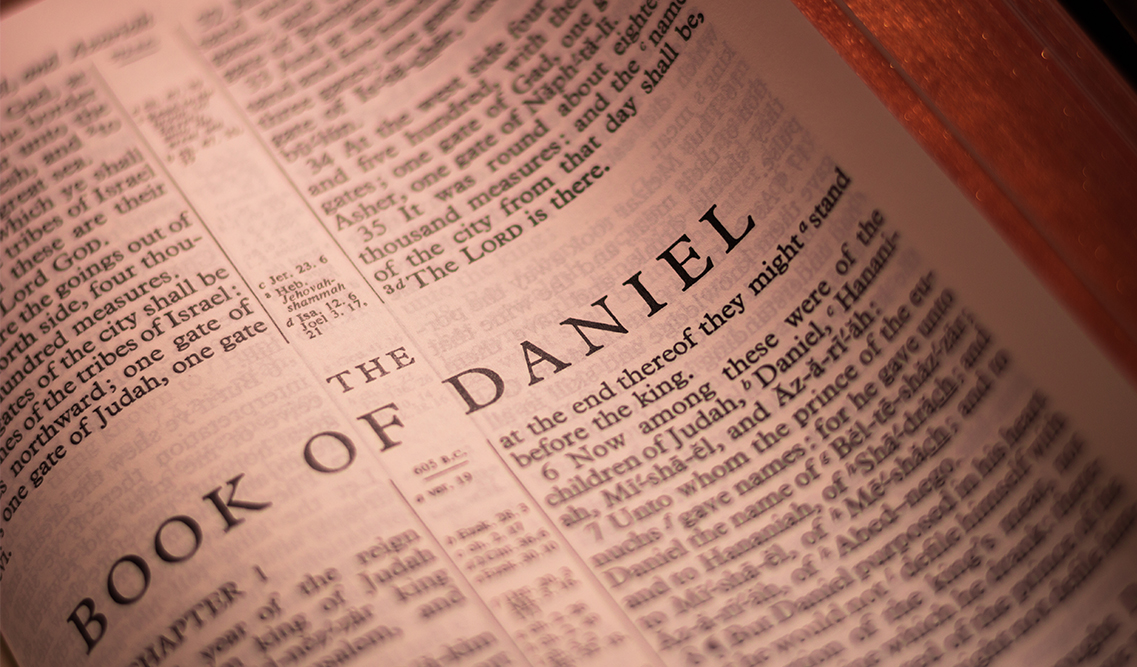In my last blog, I introduced this amazing prophecy found in Daniel 9:24-27. God sent the angel Gabriel to Daniel to tell him the exact number of years in which God would conclude his plans with Israel and the city of Jerusalem. In the last blog, we examined the language of the prophecy and determined that the word weeks is actually not a period of seven days but seven years. So, God told Daniel that it would be sixty-nine weeks (483 years) from the going out of the word to restore and build Jerusalem to the coming of an anointed one, a prince.
The term ‘anointed one’ found in 9:25 is the Hebrew word māšiyaḥ (mashiach) and refers to the pouring or smearing of sacred oil on a person to empower them for divine service. It is from that word that the English word Messiah is derived. When the Hebrew Old Testament was translated into Greek, mashiach was translated by the word Christos, which in English became Christ. So, Daniel 9 is speaking specifically of the Messiah or the Christ. This is important because many Jews teach that this was not referring to the Messiah but to other ‘anointed-ones’ such as high priests or prophets. But this one must fulfill the six descriptions found in 9:24 (to finish the transgression, to put an end to sin, to atone for iniquity, to bring in everlasting righteousness, to seal both vision and prophet, and to anoint a most holy place). Only One ‘anointed one’ in history has been able to do these things.
To understand the prophecy properly it is crucial to identify the starting point described as the “the going out of the word to restore and build Jerusalem” (Daniel 9:25). Unless we clearly identify when that word was given, we can only conjecture as to when this prophecy was fulfilled. There are four possible kings that could have been the one who issued the word to restore and rebuild Jerusalem:
“In the books of Ezra and Nehemiah, we find
four royal commands issued by Median and
Persian kings that could possibly qualify as the
“commandment to restore and to build Jerusalem.”
The first command was by Cyrus in Ezra 1:1-11.
The second was by Darius in Ezra 4:24 and 6:1-12.
The third was by Artaxerxes in his 7th year in
Ezra 7:7-26. The fourth was also by Artaxerxes in
his 20th year in Nehemiah 2:1-8”
(https://letgodbetrue.com/bible-topics
/index/prophecy/cyrus-decree-to-rebuild/).
Cyrus is the most reasonable one to have given the decree although that presents a problem in the dating. He was singled out by name almost two hundred years before birth by the prophet Isaiah (Isaiah 44:28-45:1):
“The following passages from Isaiah 44 & 45 point out how the Lord had providentially blessed Cyrus to conquer Babylon and ascend to the throne of Persia. The Lord tells us that the purpose of his blessing on Cyrus was for the sake of Israel. The Lord calls Cyrus his shepherd and emphasizes that Cyrus would perform all His will in the matter of rebuilding the city of Jerusalem and the Jewish temple. Furthermore, the LORD, by the prophet, tells us that Cyrus would let the Jewish captives freely return to their homeland” ((https://letgodbetrue.com/bible-topics/index/prophecy/cyrus-decree-to-rebuild/).
The problem with Cyrus is that if he is the one who gave the word to restore and rebuild Jerusalem, the chronology is off about 80 years: But if the biblical evidence is so strongly in favor of Cyrus, why do almost all modern Bible teachers and chronologers choose Artaxerxes as the king who gave the command to rebuild Jerusalem in the 20th year of his reign?
“The answer to this very important question lies with the fact that the only secular chronology for this time period is the chronology of Claudius Ptolemy, a Greek astronomer, astrologer, and geographer who lived in Alexandra, Egypt between 70 A.D. and 161 A.D. While Ptolemy was not contemporary with the period under investigation, and while he did not have any special information with which to determine the dates of the kings of this period, Ptolemy’s chronology of the Persian period and the kings who reigned during this period is widely accepted as accurate because it is the only chronology of this period available. Ptolemy’s chronology of the Persian kings is simply a list of the kings and the number of years that each reigned; there is no explanation or documentation to support the list.
The critical problem with Ptolemy’s chronology in light of the biblical record can be quickly summarized. Ptolemy’s date for the first year of Cyrus is 536 B.C. Therefore, it is easy to see why Cyrus, based on Ptolemy’s chronology, could not have been the king who gave the commandment to rebuild Jerusalem. If Cyrus gave the commandment to rebuild Jerusalem in 536 B.C., the 483 years from the 70 weeks prophecy would only take us to 53 B.C., some 80 years short of the manifestation of Jesus the Christ at the beginning of his public ministry” (https://letgodbetrue.com/bible-topics/index/prophecy/cyrus-decree-to-rebuild/).
The solution to this dilemma is found in understanding that most chronologies of Scripture that are used depend on Ptolemy’s chronology which depends upon his list of Persian kings. That list is now understood, by most scholars to be off about 80 years. So, depending upon Scripture alone and not the mistaken chronology of Ptolemy, Cyrus is clearly the one who gave the command to restore and rebuild Jerusalem.
In the next blog, we will look carefully at the three periods of the 490 years and how they were fulfilled in the appearing of Messiah at Jordan in the baptism of John.





0 Comments